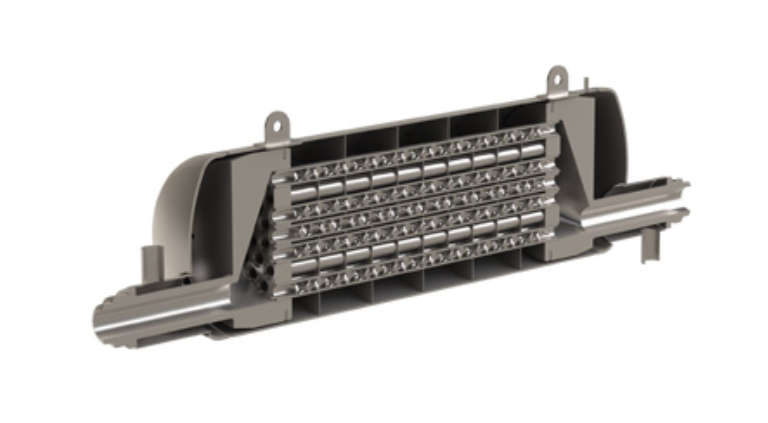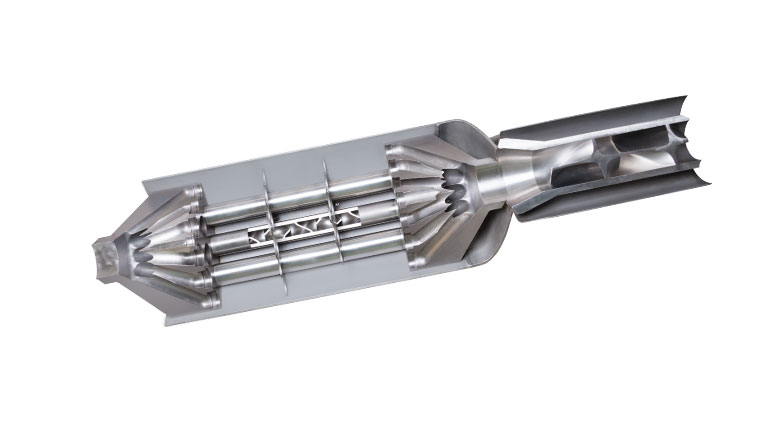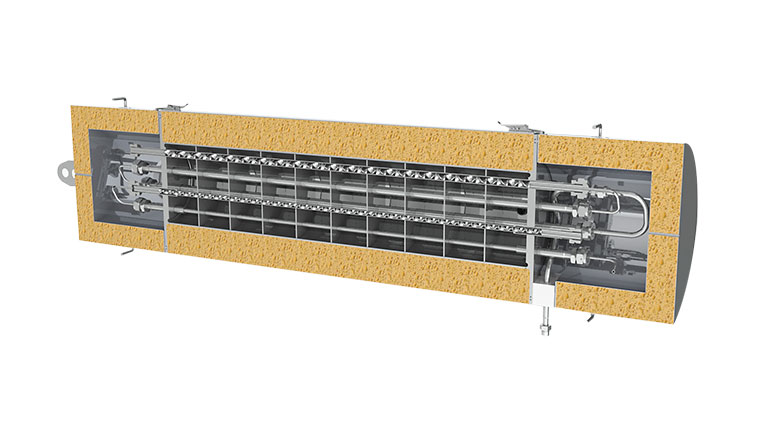Heat Exchanger
The PRIMIX spiral shaped mixer element is the basis of the heat exchangers which can be used for the inline heating and cooling of products. Because of the sophisticated construction, the PRIMIX heat exchanger takes a unique position between the current shell and tube heat exchangers. All PRIMIX heat exchangers are designed and produced to client specifications. The heat exchangers are available for the treatment of particularly high viscosity liquids.
Special manifold – mixer connection possible, resulting in true plug flow
Improved heat transfer – which results in 30 – 40% less weight
Lower pressure drop in product and on the side of the service liquid
Lower volumes and shorter residence times
Basic features
Spiral heat exchangers – faster refresh, better mixing
The design of the spiral shaped element naturally takes care of an increased heat transfer – by up to a factor 3. This is caused by the strong radial flow which causes an increase in the refresh rate on the inner walls of the process pipe.
20 to 100% more heat transfer
The applied Advanced Connection Technology (ACT), between the tube and mixing elements has a resistance to heat transfer which is equal to the resistance of the base material of the tube and element. Due to this characteristic, the surface area of each mixing element starts to behave like an additional heat-exchanging surface, which in comparison with the conventional heat exchangers results in a 20 to 100% improved heat transfer.
Design
The static mixer heat exchanger
The reliable alternative to a plate heat exchanger, scraped heat exchanger, tube heat exchanger or spiral shaped tube heat exchanger.
The following types of stationary heat exchangers can be distinguished:
- Plate heat exchanger
- Tube heat exchanger
- Spiral shaped tube heat exchanger
- Static mixer heat exchanger
Usability of heat exchangers; working pressure, process temperature and viscosity
The usability of each type of heat exchanger is largely determined by the applied working pressure, the process temperature and the corresponding viscosity of the process medium. The desired capacity is achieved by choosing a certain construction size or by linking several heat exchangers in parallel.



